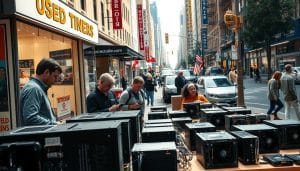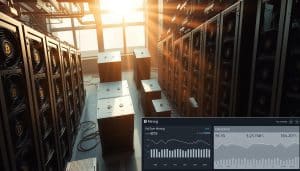It’s quite the surprise: in 2025, I was able to make a token swap for less than $0.10 on Binance Smart Chain. Meanwhile, the same kind of swap on Ethereum could cost over $25 in gas fees. This shows how picking the right platform can drastically change trading costs from a minor annoyance into a major part of trading strategy.
I explored Uniswap, SushiSwap, and PancakeSwap to create a helpful guide on the best low-fee decentralized exchanges. By looking at swap fees, average gas costs, slippage, and smart contract safety, we can really see how these exchanges stack up. This approach helps us understand what a trade will really cost, how user-friendly the platform is, and how safe your trades are.
Liquidity and trader behavior can deeply affect DEX markets and prices, as shown by Chainlink (LINK), with 87.5% of its supply being profitable and exchange reserves at their lowest in years. I also looked at fee ranges, compared gas costs on Ethereum and BSC, and considered when a low-fee DEX is the best option. This depends on if you’re making occasional swaps, trading actively, or providing liquidity.
Key Takeaways
- Low fees vary by chain: BSC and layer-2s often beat Ethereum on gas costs.
- Swap fee percentage is only part of the total cost — gas and slippage matter.
- Uniswap, SushiSwap, and PancakeSwap each deliver strengths for different user profiles.
- Smart contract audits and liquidity depth are crucial when choosing the cheapest decentralized exchange.
- Monitor on-chain signals — exchange reserves and whale moves — to anticipate fee spikes.
Understanding Decentralized Exchanges (DEXs)
When I first used decentralized cryptocurrency platforms, I directly controlled my assets. I had to sign off trades using MetaMask, keep an eye on gas fees, and manage slippage. This experience showed me how DEXs operate and the importance of affordable trading options for regular users.
What Are Decentralized Exchanges?
Decentralized exchanges let users trade tokens with each other directly. They often use a system called automated market makers (AMMs) to set prices. Some mix AMMs with traditional trading systems to help with large trades.
On these platforms, anyone can add a new token or create a liquidity pool quickly. This encourages innovation but also means users must be careful and do their homework.
How DEXs Differ from Centralized Exchanges
Centralized exchanges hold your crypto keys, but on DEXs, you keep your keys using wallets like MetaMask. This setup lessens the risk of losing your assets to hackers but means you need to be extra cautious about security.
Unlike centralized exchanges that ask for your personal info, DEXs don’t have such requirements and offer immediate access to new tokens. They rely on users to fund liquidity pools, which carries both the chance to earn fees and the risk of loss.
Market indicators like changes in Chainlink reserves or big moves in Cardano wallets affect DEX performance. These factors, along with whale transactions, can influence which DEXs are cheaper to use.
To choose the best DEX, consider the network fees, understand how AMMs work, and think about potential slippage. Understanding these factors helps you figure out the real cost of each trade.
Benefits of Using Low-Fee Decentralized Exchanges
I’ve tested trading across multiple platforms for months. Low-fee DEXes significantly impact active traders. They make small, frequent trades more sensible financially. This is crucial for strategies like dollar-cost averaging or trading on tight margins.
On Uniswap, fees range from 0.05% to 1.0%. SushiSwap offers competitive rates. PancakeSwap, on the BSC, often has the lowest costs due to cheaper gas fees. For those seeking budget-friendly trading options, I recommend this guide: budget-friendly crypto investments.
Cost-Effectiveness for Traders
A decentralized exchange with low fees encourages small trades. A shift from a 0.3% fee to just 0.05% can make a big difference. My simulations show that lower fees can increase profits, especially with regular rebalancing.
Accessing presales and new tokens becomes less expensive. During unpredictable token launches, everyone looks for cost-effective options. This draws many traders to low-fee chains for their initial investments.
Enhanced Security Features
DEXes reduce the risk of losing funds to a third party. They don’t require you to hand over your private keys. Many of them undergo security checks by experts like CertiK and PeckShield. Although audits help lower risks, they can’t remove them entirely.
I keep an eye on metrics and have seen how market squeezes can happen. It’s essential to review audit reports and the history of bug bounties before making significant moves.
Greater Control Over Funds
With noncustodial wallets, your money is immediately accessible. I’ve quickly moved funds during market dips. This speed is an advantage in volatile markets.
But with great control comes great responsibility. Mistakes like sending funds to the wrong address can happen. Being careful with wallet security and using trusted platforms can reduce risks and keep the benefits of managing your own funds.
| Benefit | Practical Impact | Real-World Example |
|---|---|---|
| Lower Trading Costs | Improves ROI on small, frequent trades | Uniswap pools at 0.05%–1.0% vs PancakeSwap on BSC |
| Reduced Custodial Risk | Funds stay in your wallet; no exchange custody | SushiSwap and audited contracts with bug-bounty programs |
| Faster Reaction | Immediate trades during market moves | Self-custody allowed quick rebalances during dips |
Choosing a low-fee DEX depends on your trading goals. If you value low-cost access and frequent trading, explore budget-friendly options on low-fee chains.
Top Low-Fee Decentralized Exchanges of 2025
I checked out many protocols this year to see which ones cut trading costs without hurting liquidity or user experience. My aim was clear: find the best decentralized exchanges used by real traders who care about fees.
I’ll go over three top platforms, noting their fees, gas impact, and standout features. Each one is outlined for why traders might pick them as their go-to for low-fee decentralized exchanges.
Uniswap
Uniswap, a big name on Ethereum, has different fee levels: 0.05%, 0.3%, and 1%. With Uniswap V3, you see less slippage on big trades thanks to concentrated liquidity.
This platform’s deep liquidity often makes up for its slightly higher fees. But, Ethereum’s gas prices can suddenly make trades expensive, even with low platform fees.
SushiSwap
Starting as a copy of Uniswap, SushiSwap grew by going multi-chain and adding perks like Onsen. It’s now on chains like Polygon and Avalanche, offering cheaper paths for many tokens.
In tests, SushiSwap’s rewards and multiple chain options provided good fee-adjusted results for lesser-known tokens. Those looking for deals or savings typically find SushiSwap offers low fees.
PancakeSwap
PancakeSwap uses the BNB Smart Chain, often the cheapest for trades in dollar terms. Low gas fees on BSC, plus strong liquidity for BEP-20 tokens, mean swapping costs less compared to Ethereum.
This makes it ideal for small traders, those buying into new memes, and anyone who values low transaction costs over low percentage fees.
| Exchange | Typical Fee Tiers | Best Use Case | Gas Impact |
|---|---|---|---|
| Uniswap (Ethereum) | 0.05%, 0.3%, 1% | High liquidity major pairs; lower slippage | High when Ethereum gas rises |
| SushiSwap (Multi-chain) | Varies by chain; competitive with incentives | Mid-cap tokens; cross-chain strategies | Moderate to low on layer-2s and sidechains |
| PancakeSwap (BSC) | Standard low-percentage swap fees | Small trades; presale and meme token activity | Very low on BNB Smart Chain |
Market events, like meme presales, often steer traders to BSC or layer-2 options for lower costs. That’s why the cheapest decentralized exchange varies by user, based on the token and size of the trade.
Fee Structures of Popular DEXs
I look at fees on platforms like Uniswap, SushiSwap, and PancakeSwap. Even small changes can affect costs. Traders face a mix of fees, gas, and hidden slippage costs. I aim to explain these to help you find a cost-effective decentralized exchange.
Trading Fees Explained
Automatic trading platforms often take a fee from each trade. For example, Uniswap’s pools usually take 0.30%. SushiSwap does the same, but active users might pay less thanks to rewards. PancakeSwap charges a bit less, 0.25%, and has cheaper gas fees.
Some platforms have special pricing for big trades. Concentrated liquidity pools are often less expensive for them. I keep an eye on the market to catch when big buys raise slippage and costs.
Withdrawal Fees and Network Costs
Most DEXs don’t charge extra to withdraw. But, chain fees can be high. A busy day on Ethereum could add $20 in gas to a small trade. Binance Smart Chain is cheaper, making PancakeSwap a good choice for little trades.
Switching chains costs more and takes time. Sending tokens from BSC to Ethereum can be pricey and slow. I remember these costs when suggesting DEXs that keep fees low.
The market’s state affects costs too. When there’s less to sell, slippage goes up. Big wallets holding lots of a currency can also make trades more expensive.
| DEX | Nominal Trade Fee | Typical Gas/Network Cost | Effective Cost Notes |
|---|---|---|---|
| Uniswap (Ethereum) | 0.30% | $1–$40 (varies with congestion) | High gas can make small swaps expensive despite low percentage; layer-2 reduces cost. |
| SushiSwap | 0.30% (protocol incentives may offset) | $1–$30 (varies) | Incentives and token rewards can lower net cost for liquidity providers and frequent traders. |
| PancakeSwap (BSC) | 0.25% | Cents | Low gas yields lower effective cost, making it a true low cost decentralized exchange for small trades. |
It’s smart to think about all fees, gas, and slippage. For small trades, look at gas costs. For big trades, think about pool depth. These factors help decide if a DEX will really save you money.
Factors That Impact Exchange Fees
I explore what influences fees on decentralized exchanges. Changes in how much crypto is available, sudden demand, and the rules of the platform can change costs. I’ll explain these factors so you can make better trades on these platforms.
Liquidity and Trading Volume
More liquidity means tighter price differences and less price change on big orders. I looked at different trading spots and noticed ETH/USDC pairs had little price change, even on large trades.
But it’s a different story with less popular tokens. There, even small buys can make prices jump a lot, costing you more. This shows why some exchanges have different prices for different tokens.
Market Demand and Token Type
When more people want to buy a token, fees can go up, even if the exchange’s own fees don’t. Tokens owned by a few or that suddenly become popular can make fees go up. I saw how big buyers of ADA and similar actions made costs go up more than usual.
The kind of token also affects what you pay. Common tokens or stablecoins often have lower costs than less common ones. If you’re looking for low fees, look at who owns the tokens and how much they’re traded.
Governance Models for Fee Adjustments
Some exchanges let token owners vote on fee changes. This means if more people use the network, those owners might vote for higher fees to improve the exchange or its security.
This voting can make fees unpredictable. An exchange that’s cheap now might not be after a vote. Keeping an eye on these votes can help you guess cost changes.
| Factor | What I Observed | Impact on Trader |
|---|---|---|
| Liquidity depth | Major pairs like ETH/USDC showed tight spreads; low-cap tokens spiked slippage | Lower slippage for deep pools; higher effective cost for thin pools |
| Trading volume | Volume surges during token launches or news events increased transaction costs | Short-term fee spikes; timing matters for entry and exit |
| Holder distribution | Concentrated holdings (whales) reduced perceived liquidity during sell-offs | Unexpected price moves; higher realized fees for counterpart trades |
| Token type | Stablecoins and major tokens had predictable, low slippage | Cheaper trades on common pairs; niche tokens cost more |
| Governance rules | DAOs can change fee tiers or rebates in response to market stress | Fee structures may change over time; affects long-term cost planning |
| Platform positioning | Some economic decentralized trading platforms aim for low protocol fees to attract volume | May act as budget-friendly decentralized exchanges, but watch slippage |
Evaluating DEX Performance Metrics
I judge decentralized crypto platforms by their speed, user interface, and security. These metrics show how a platform performs, especially during busy times. I combine on-chain data with my own testing to get a complete view.
Transaction Speed and Efficiency
I time how long trades take across different networks. During busy times, Ethereum mainnet is slower and has higher fees. This can increase the risk of losing money on trades. Binance Smart Chain and Layer-2 solutions are usually quicker and cheaper, making trades more dependable.
I also look at how quickly transactions become final. Quicker finality means fewer failed trades and less chance of being taken advantage of. For those looking for cheap exchanges, I compare real trade times to what’s advertised.
User Experience and Interface Design
I check how easy it is to understand the trading process, including slippage settings and token selection. A simple trading area and clear contract information help avoid mistakes. It’s still common to choose the wrong token by mistake, so having a list of verified tokens is helpful.
Feedback while a transaction is waiting is also important. I rate platforms based on how easy it is to check gas fees, see the impact on price, and cancel a trade if necessary. These aspects determine if a low-fee exchange is really user-friendly.
Smart Contract Security Audits
I read full audit reports, not just summaries. Audit firms like CertiK and HashEx share detailed findings. An audit is a good sign, but it doesn’t mean there are no risks of bugs or hacks.
I look at how recent an audit is, if issues were fixed, and if there’s a reward program for finding bugs. A project’s history, including how they’ve handled past problems, shows me if they’ve grown stronger. Reviewing audits along with live data like liquidity provides a deep look into an exchange’s safety.
| Metric | What I Measure | Why It Matters | Practical Tip |
|---|---|---|---|
| Transaction Speed | Average confirm time, finality window | Impacts slippage, failed swaps | Test swaps on mainnet and Layer-2 during peak hours |
| User Experience | Slippage controls, routing clarity, token verification | Reduces user errors and bad trades | Use verified token lists and double-check contract addresses |
| Security Audits | Audit firm, scope, recency, bug fixes | Shows maturity and risk posture | Read full reports from CertiK, HashEx and track bounty programs |
| Liquidity & Reserves | Pool depth, slippage at trade sizes | Determines execution quality for large orders | Compare on-chain reserves before trading large amounts |
| Fee Reality | Actual gas spent, protocol fees | Shows if a minimal fee DEX is cost-effective | Compute total cost per trade to find the best decentralized exchanges with low fees |
Predictions for DEX Fee Trends in 2024
I keep an eye on how fees change. Signals from the blockchain suggest a move toward cheaper chains and protocols. This means popular decentralized exchanges with low costs will become even more attractive.
We’ll see changes in how fees are structured, with more detailed levels and flexible pricing. Protocols will try out smaller fee ranges and timing to match market conditions. They might also offer special deals to attract more users.
Layer-2 rollups are going to feel the pressure to lower their fees. The focus will be on using gas more efficiently and offering deals. Buyers looking for deals will flock to chains where trading costs less.
New players will focus on creating better deals through multi-chain strategies and advanced market-making methods. They’ll take cues from Uniswap v3 and introduce features like cross-chain trading. This will put them in direct competition with the big decentralized exchanges.
Presales and meme-coin trends will show us where the market’s heading. Sudden interest in low-cost projects means quick changes in where people put their money. I’ll be watching for early signs of what’s catching on with traders.
Key signs to watch include exchange reserves and how profitable chains are. These figures often hint at upcoming trends. For those looking for the best deals, it’s crucial to observe these indicators closely.
Tools for Analyzing DEX Proficiency
Before I make any swap, I go through a quick checklist. This habit keeps mistakes low. It also helps me find the best decentralized exchanges with low fees when the markets move fast. I use trade aggregators, on-chain analytics, and basic contract checks. These methods verify liquidity and fees in real time.
Aggregators and price trackers
I use 1inch, Paraswap, and Matcha as my main aggregators. They route trades across different pools and chains. This reduces slippage and lowers costs. An aggregator might split an order between Uniswap and SushiSwap. Or it could find a cheaper pool on Polygon. This saves money on DEX options.
Before trading, I check the routes, slippage, and fees expected. This simple step has saved me a lot of money. Without it, I’d be routing every swap manually.
On-chain analytics platforms
For market context, I turn to Glassnode, Dune Analytics, and Nansen. They show liquidity depth, exchange reserves, and token concentration. Take Glassnode’s charts on profit metrics and supply in profit. They help me understand if a token’s price movement is temporary or solid.
I also look for risks like shallow pools or concentrated token ownership. Such issues can raise costs on decentralized cryptocurrency platforms for large orders.
Supporting checks I run
- Inspect pool depth and 24-hour volume on the target DEX.
- Verify token contracts on Etherscan or BscScan for authenticity.
- Review audit reports from CertiK or HashEx when available.
- Cross-check quoted gas and network costs against expected savings from affordable DEX options.
I’ve made these tools part of my pre-trade routine. It’s handy, easy to repeat, and aimed at finding the best decentralized exchanges with low fees. Plus, it doesn’t compromise on safety.
Investor Safety in Decentralized Trading
I’ve learned a lot by watching the market. It goes through hype, calm, and panic phases. This experience showed me that low fees and attractive token charts are just parts of a bigger safety plan. When looking for a low-fee DEX or an affordable decentralized exchange, protecting your money and peace of mind is essential.
Audits are helpful, but they don’t guarantee everything is safe. Companies like CertiK and HashEx review the code to find many potential issues. I make it a point to understand the audit’s scope, check if they looked at economic issues, and see if any problems found were fixed afterwards.
If an audit is quick or doesn’t cover much, I worry. I discovered a project that said it had two audits, but didn’t review its token contract. This is a big deal. A thorough audit, including contract and economic analysis, reveals less risk. This is vital for those searching for a cost-effective decentralized exchange.
Importance of Smart Contract Audits
Audit details matter. Does the audit talk about possible attacks and how to fix them? Does it say which on-chain contracts were checked? These points are crucial beyond just an emblem on a website.
I check if auditors did a second review after fixes were applied. If there’s a note of major problems that were resolved, I look for proof of the corrections or an update. This openness shows which projects truly focus on security. They stand apart from those just wanting to draw users to their cheap exchange listings.
Understanding Rug Pulls and Scams
Rug pulls can appear in various ways: dangerous token codes, traps that stop sales, or bogus liquidity pools. Once, I almost lost money by giving full access to a contract that then limited token transfers.
To avoid risks, I give only needed permissions and reset them after trading. I check token details on Etherscan or BscScan and look into liquidity and vesting schedules. I’m cautious with presales offering huge returns from unknown teams.
Market trends offer clues. The craze for presale meme coins can tempt traders with their low fees. Funds moving quickly can trick people into buying. This distraction covers up the contract dangers and weak token designs.
Practical steps I follow:
- Use a hardware wallet for larger sums and cold storage for long-term holdings.
- Verify contract addresses, token holders, and liquidity pool composition before investing.
- Check audit reports for coverage, retests, and economic risk analysis.
- Confirm liquidity lock length and review vesting schedules for team tokens.
- Avoid tokens with extreme presale promises unless the team and code are verifiable.
- Prefer platforms known for transparency even if they are not the absolute cheapest decentralized exchange.
| Risk Area | What I Check | Why It Matters |
|---|---|---|
| Audit Coverage | Full contract review, economic vectors, retest logs | Reduces unseen vulnerabilities that can drain funds |
| Token Contract | Verified address on Etherscan/BscScan, source code match | Prevents interacting with malicious or fake tokens |
| Liquidity | Lock status, lock duration, owner-controlled liquidity | Ensures liquidity cannot be pulled by developers |
| Approvals | Grant limited allowances, reset after use | Limits exposure if a token contract becomes malicious |
| Market Signals | Whale movements, presale hype, unusual volume spikes | Helps separate genuine interest from manipulated FOMO |
| Platform Choice | Reputation, transparency, community audits | Selecting a minimal fee DEX should not sacrifice security |
Frequently Asked Questions (FAQs)
I keep a brief FAQ here to answer common questions about testing decentralized cryptocurrency platforms and finding the top decentralized exchanges with low fees. These insights come from hands-on experience with Ethereum, Binance Smart Chain, and several layer-2 solutions.
How Do I Choose the Right DEX?
Pick based on the blockchain you prefer. Ethereum’s gas can be pricey; BNB Smart Chain and Arbitrum tend to be cheaper. Choose a chain that matches your token to dodge bridge fees.
Scrutinize the liquidity depth for your trading duo. Large pools on Uniswap or SushiSwap reduce slippage. But, low liquidity can cancel out any benefits from cheaper DEX options.
Investigate security and audits. Trust protocols vetted by firms such as CertiK or Quantstamp more. Start with tiny trades first and use aggregators to spot the best cost-effective options across platforms.
Are Low Fees Always Better?
Not every time. Low fees lure traders, yet high gas on a packed network can negate those savings. Think about slippage; affordable fees in sparse pools might lead to poor deals.
Consider the total cost: trading fee + gas + likely slippage. For the best savings on a DEX, choose networks and pools that keep all three low together.
What Are Gas Fees and How Do They Work?
Gas fees compensate miners or validators for processing your transaction. On Ethereum, busy times hike up gas costs. Switching to BSC, Polygon, or layer-2s like Optimism for similar trades can save money.
Timing transactions with gas trackers and setting right gas limits can save money. Paying too little gas can freeze a transaction. Too much, and you’re just wasting money. Watching for on-chain hints, like Chainlink reserve shifts or big moves on Cardano, can forewarn about fee changes due to liquidity shifts.
Evidence and Statistics on DEX Usage
I keep an eye on sites like Glassnode and Dune to spot trends in decentralized trading. They show how trading goes from quiet to busy, especially during special events. These changes can lead traders to platforms that are ready for sudden increases in activity.
Take Chainlink as an example. When LINK’s price jumped from under $15 to over $25, most owners were making money. This lead to more activity on DEXs, which affects trading conditions. I also pay attention to how much currency DEXs have; low amounts can mean more volatility and activity.
Comparing fees and network costs gives a complete view. Uniswap has fees from 0.05% to 1%. Sushiswap’s fee is usually about 0.3%. PancakeSwap, on the BNB Chain, has fees close to 0.25%. These fees matter, but so do network congestion and gas prices.
For a $50 trade, Uniswap might seem cheap but can cost a lot in gas fees at busy times. PancakeSwap, on the other hand, has very low gas fees, making it a favorite for those looking to save. Thus, traders choose exchanges based on cost and when they trade.
Presales also change how DEXs operate. They can lead to more demand for liquidity and affect prices. A big presale can make a DEX look busier than it usually is. That’s why keeping an eye on presales is important for predicting busy times on these platforms.
When big investors, or whales, buy a lot, it can also impact the market. For example, if they buy a lot of ADA, they reduce the available supply, affecting prices and fees. This can make trading more expensive for smaller traders.
Here’s a comparison of fees, gas costs, and what you might pay for a $50 trade on different platforms:
| DEX | Fee Structure | Typical Gas Cost | Estimated Total Cost on $50 Swap |
|---|---|---|---|
| Uniswap (Ethereum) | 0.05%–1% | High; $10–$40 in congestion | $10–$40 + fee and slippage |
| SushiSwap (Multi-chain) | ~0.3% | Variable; lower on Layer 2 and alternative chains | $0.50–$10 + fee and slippage |
| PancakeSwap (BSC) | ~0.25% | Low; cents typical | ~$0.50 + fee and slippage |
Consider the total cost: fees, gas, and slippage. This helps explain why some traders choose certain platforms over others. It’s also why preferences change as technology makes trades smoother.
Always check Dune and Glassnode for insights into trading patterns during big events. These hints can help you decide where and when to trade, keeping costs in mind.
Conclusion: Choosing the Right DEX for You
To find the best DEX, balance costs, liquidity, and security. Check gas costs, pool depth, and fees. Also, look at audits and market trends such as whale activity. For small trades in 2025, PancakeSwap was my go-to for its low costs. Uniswap was my pick for deep liquidity on big trades, even with higher gas fees.
What you do is more crucial than the theory. Try out small swaps first, and use tools like 1inch. Read audits from places like CertiK or HashEx. Keep an eye on the market with Glassnode and Nansen. Be careful with token permissions and stay updated on governance changes. In quick-moving markets, I choose DEXs on low-fee chains and double-check audits, like for MAGACOIN FINANCE or through reviews like this project overview.
To get the cheapest trades, start with test swaps and compare different aggregators. Then, grow your trades as you gain confidence. Use tools to find new chances or see where money is moving. I’ll continue to explore and share insights to guide you to the best DEXs without hefty fees and the smartest, cheapest options.
In 2024, we’ll see more innovation in fees, more layer-2 use, and fluid trading as investors follow the trends. Whether you’re just starting or more advanced, in the US, it’s about checking costs and security and adjusting with the market. For a quick guide on saving on crypto trades and understanding DEX fees, check out this guide affordable crypto options.








